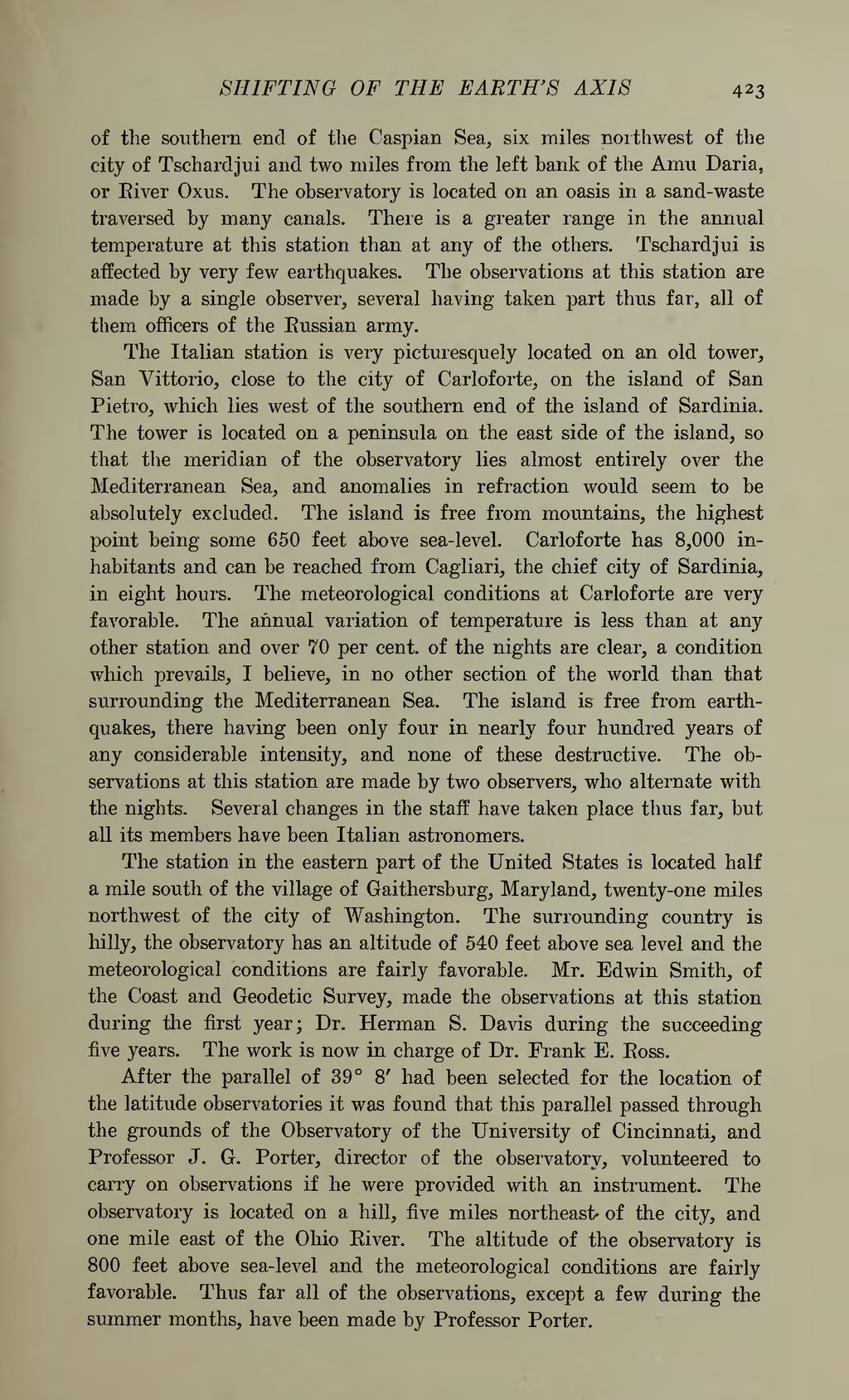of the southern end of the Caspian Sea, six miles northwest of the city, of Tschardjui and two miles from the left bank of the Amu Daria, or River Oxus. The observatory is located on an oasis in a sand-waste traversed by many canals. There is a greater range in the annual temperature at this station than at any of the others. Tschardjui is affected by very few earthquakes. The observations at this station are made by a single observer, several having taken part thus far, all of them officers of the Russian army.
The Italian station is very picturesquely located on an old tower, San Vittorio, close to the city of Carloforte, on the island of San Pietro, which lies west of the southern end of the island of Sardinia. The tower is located on a peninsula on the east side of the island, so that the meridian of the observatory lies almost entirely over the Mediterranean Sea, and anomalies in refraction would seem to be absolutely excluded. The island is free from mountains, the highest point being some 650 feet above sea-level. Carloforte has 8,000 inhabitants and can be reached from Cagliari, the chief city of Sardinia, in eight hours. The meteorological conditions at Carloforte are very favorable. The annual variation of temperature is less than at any other station and over 70 per cent, of the nights are clear, a condition which prevails, I believe, in no other section of the world than that surrounding the Mediterranean Sea. The island is free from earthquakes, there having been only four in nearly four hundred years of any considerable intensity, and none of these destructive. The observations at this station are made by two observers, who alternate with the nights. Several changes in the staff have taken place thus far, but all its members have been Italian astronomers.
The station in the eastern part of the United States is located half a mile south of the village of Gaithersburg, Maryland, twenty-one miles northwest of the city of Washington. The surrounding country is hilly, the observatory has an altitude of 540 feet above sea level and the meteorological conditions are fairly favorable. Mr. Edwin Smith, of the Coast and Geodetic Survey, made the observations at this station during the first year; Dr. Herman S. Davis during the succeeding five years. The work is now in charge of Dr. Frank E. Ross.
After the parallel of 39° 8′ had been selected for the location of the latitude observatories it was found that this parallel passed through the grounds of the Observatory of the University of Cincinnati, and Professor J. G. Porter, director of the observatory, volunteered to carry on observations if he were provided with an instrument. The observatory is located on a hill, five miles northeast of the city, and one mile east of the Ohio River. The altitude of the observatory is 800 feet above sea-level and the meteorological conditions are fairly favorable. Thus far all of the observations, except a few during the summer months, have been made by Professor Porter.
